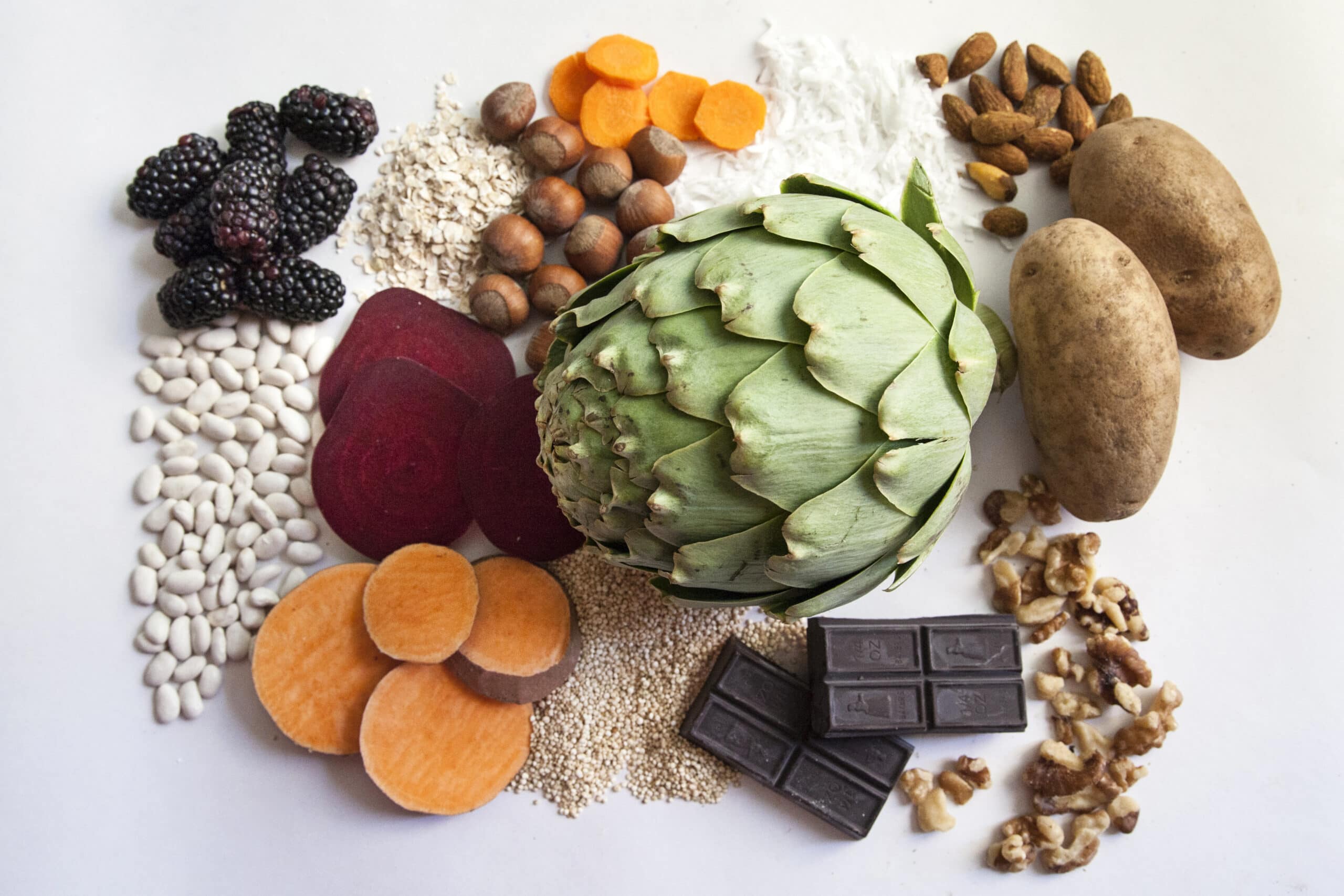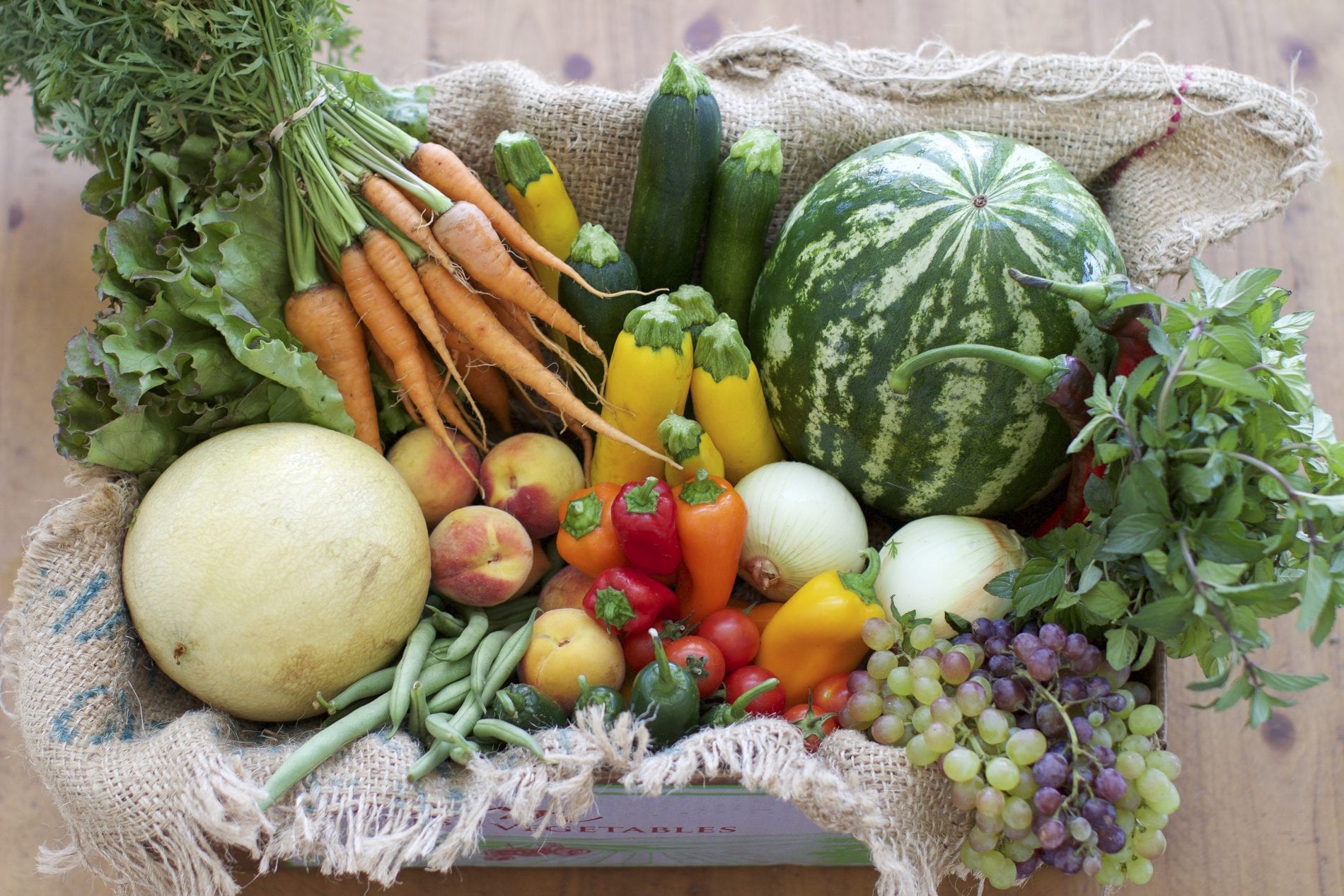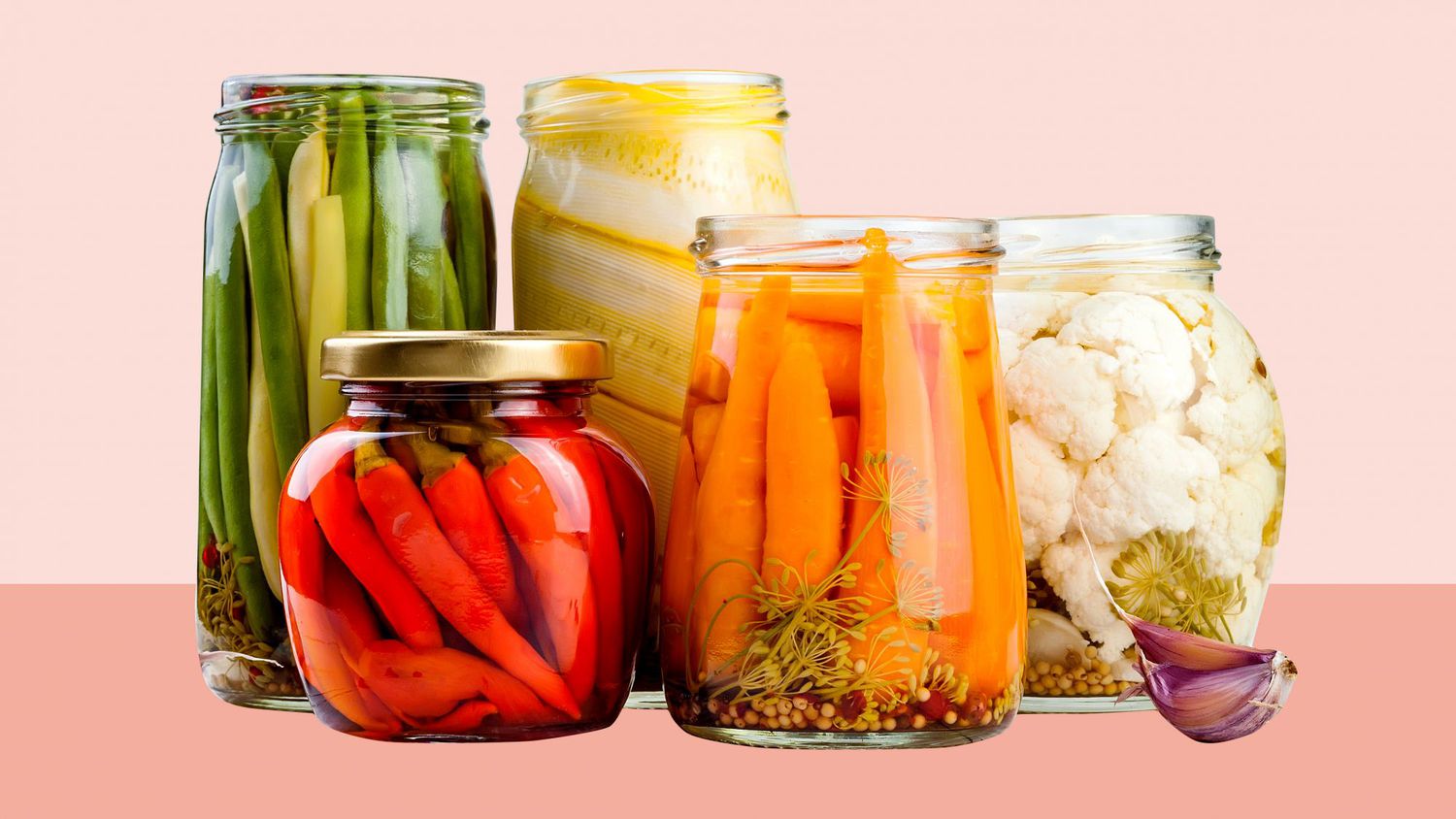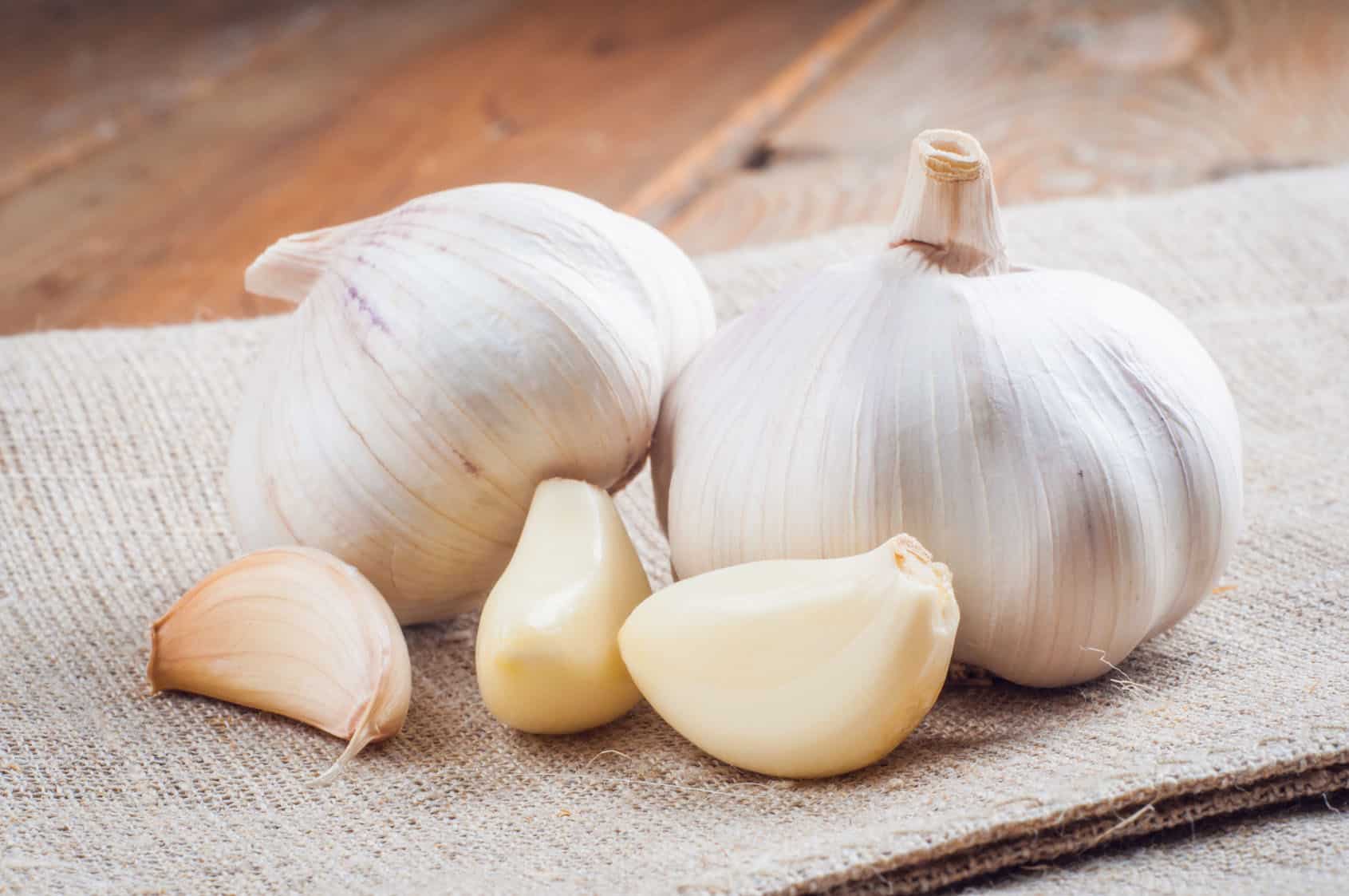Home>Gardening News and Trends>Latest News>What Vegetables Are High In Oxalates


Latest News
What Vegetables Are High In Oxalates
Modified: January 22, 2024
Discover the latest news on vegetables high in oxalates. Learn about the top oxalate-rich vegetables and their potential health effects in this informative guide.
(Many of the links in this article redirect to a specific reviewed product. Your purchase of these products through affiliate links helps to generate commission for Chicagolandgardening.com, at no extra cost. Learn more)
Table of Contents
- Introduction
- Understanding Oxalates and their Health Implications
- Leafy Green Vegetables with High Oxalate Content
- Cruciferous Vegetables with High Oxalate Content
- Root Vegetables with High Oxalate Content
- Other Vegetables with High Oxalate Content
- Cooking Methods to Reduce Oxalate Levels in Vegetables
- Managing Oxalates in the Diet
- Conclusion
Introduction
Welcome to our comprehensive guide on the topic of high oxalate content in vegetables. Whether you want to learn more about oxalates for personal health reasons, dietary restrictions or just general knowledge, you’ve come to the right place. We will explore the various vegetables that contain high levels of oxalates and discuss the potential health implications.
Oxalates are naturally occurring compounds found in many plant-based foods, including vegetables. While they are generally considered harmless and even beneficial in moderate amounts, consuming excessive oxalates can potentially lead to health issues.
Understanding the oxalate content in vegetables is important for individuals who have conditions such as kidney stones or are at risk of developing them. By being aware of which vegetables are high in oxalates, individuals can make informed decisions about their dietary choices and work with healthcare professionals to manage their oxalate intake.
This guide will cover a wide range of vegetables that are known to have high oxalate content. It will provide information on different types of vegetables, including leafy greens, cruciferous vegetables, root vegetables, and other varieties that may surprise you. Additionally, we will explore cooking methods that can help reduce the oxalate levels in these vegetables, and provide tips on managing oxalates in your diet.
By the end of this guide, you will have a better understanding of which vegetables to consume in moderation and how to incorporate them into a balanced, oxalate-conscious diet. So, let’s dive into the world of vegetables and oxalates and discover how they can impact your health.
Understanding Oxalates and their Health Implications
Oxalates are naturally occurring compounds found in many plant-based foods, including vegetables. They are derived from oxalic acid, which is known for its ability to bind with minerals in the body, forming crystals. While some oxalates are bound to minerals and excreted through the urine, others can accumulate and potentially cause health issues.
The primary concern with oxalates is their association with the formation of kidney stones. When oxalate levels in the urine become too high, they can combine with calcium to form calcium oxalate crystals. These crystals can then aggregate and develop into kidney stones over time. The size and location of the stones can cause varying degrees of discomfort and may even require medical intervention.
For individuals prone to kidney stones or those with certain medical conditions, managing oxalate intake is crucial. However, it is important to note that not everyone needs to strictly limit their oxalate consumption. For the general population, a diet that includes a variety of foods, including moderate amounts of vegetables high in oxalates, can be part of a healthy eating plan.
However, it is essential to be aware of the oxalate content in vegetables and make informed choices. Those who have had kidney stones in the past or are at higher risk may need to limit their consumption of certain high-oxalate vegetables. Consulting with a healthcare professional or registered dietitian can provide personalized guidance based on individual health needs and risk factors.
In addition to kidney stones, it’s worth noting that oxalates can potentially interfere with mineral absorption in the body. Oxalates have the ability to bind with minerals like calcium, iron, and magnesium, forming insoluble compounds that may hinder their absorption. This could potentially contribute to nutrient deficiencies over time, particularly for individuals with poor nutrient absorption or certain medical conditions.
Understanding the health implications of consuming high-oxalate vegetables is crucial for making informed dietary choices. It is important to strike a balance between incorporating these nutritious vegetables into your diet and minimizing the risk of adverse effects. Next, we will delve into specific vegetables with high oxalate content and explore methods to manage their levels.
Leafy Green Vegetables with High Oxalate Content
Leafy green vegetables are often considered a healthy choice due to their rich nutrient profiles and numerous health benefits. However, it’s important to note that some leafy greens also contain high levels of oxalates. Here are a few examples:
- Spinach: Spinach is notorious for its high oxalate content. While it is packed with vitamins, minerals, and antioxidants, it is also important to consume spinach in moderation. Cooking spinach can help reduce oxalate levels slightly, but it is still considered one of the vegetables with the highest oxalate content.
- Kale: Kale, a popular superfood, is another leafy green that contains notable levels of oxalates. Despite its numerous health benefits, individuals with a history of kidney stones or at risk for them may want to limit their intake of kale or consider cooking methods that can help reduce oxalate levels.
- Beet greens: The vibrant greens attached to beetroots are not only delicious but also contain high amounts of oxalates. While they are a great source of vitamins and minerals, individuals with oxalate-related concerns may want to consume them in moderation.
- Swiss chard: Known for its colorful stems and large, dark green leaves, Swiss chard is another leafy green vegetable that contains moderate to high oxalate levels. Incorporating it into your diet is still beneficial, but those with oxalate concerns may want to limit their intake or opt for cooking methods that reduce oxalate content.
It’s important to remember that while these leafy greens contain high oxalate levels, they are also packed with other essential nutrients. Incorporating a variety of leafy green vegetables into your diet can still contribute to a well-rounded and nutritious eating plan. Cooking methods such as blanching, steaming, or boiling can help reduce oxalate levels in vegetables, including leafy greens.
Now that we’ve explored the high oxalate content in leafy green vegetables, let’s move on to the next category: cruciferous vegetables.
Cruciferous Vegetables with High Oxalate Content
Cruciferous vegetables, known for their distinctive cross-shaped flowers, are a popular choice for their nutrient density, fiber content, and potential health benefits. However, some cruciferous vegetables also contain notable levels of oxalates. Let’s take a look at a few cruciferous vegetables with high oxalate content:
- Broccoli: While broccoli is a nutritional powerhouse, it is important to be mindful of its oxalate content. Consuming broccoli in moderation is generally safe for most individuals, but those with a history of kidney stones or who are at risk for them may need to monitor their intake.
- Cauliflower: Cauliflower, a versatile vegetable, is another cruciferous option that contains oxalates. Despite this, it is still a great addition to a balanced diet due to its many beneficial nutrients. Cooking methods such as boiling or steaming can help reduce oxalate levels in cauliflower.
- Cabbage: Cabbage, whether in green or red varieties, is a low-calorie vegetable that offers numerous health benefits. While it contains oxalates, it is still safe to consume for most individuals. For those concerned about oxalate levels, consider incorporating other low-oxalate vegetables into your meals.
- Kohlrabi: The unique and versatile kohlrabi, with its bulbous stem and edible leaves, also contains moderate amounts of oxalates. However, it is still a nutrient-dense vegetable that can be enjoyed in moderation as part of a balanced diet.
Understanding the oxalate content of cruciferous vegetables helps individuals who may be at risk for kidney stones or have a need to manage their oxalate intake. While these vegetables offer numerous health benefits, it is essential to consume them in moderation and consider cooking methods that can help reduce oxalate levels.
Next, we will explore the category of root vegetables and their oxalate content.
Root Vegetables with High Oxalate Content
Root vegetables are a diverse and nutritious category of vegetables that are often featured in a variety of culinary dishes. While they offer numerous health benefits, it’s important to be aware that certain root vegetables also contain high levels of oxalates. Let’s explore a few root vegetables with notable oxalate content:
- Beets: Beets are a vibrant and flavorful root vegetable that contains high levels of oxalates. Despite their nutritional value, individuals with oxalate-related concerns may need to limit their intake or consider cooking methods that can help reduce oxalate levels.
- Parsnips: Parsnips, with their sweet and earthy flavor, are another root vegetable that contains significant amounts of oxalates. While they offer dietary fiber and several essential nutrients, individuals with oxalate-related concerns may want to consume them in moderation or explore alternative low-oxalate vegetables.
- Turnips: Turnips are a versatile root vegetable that can be enjoyed both raw and cooked. However, they are known to contain oxalates. Cooking methods such as boiling or steaming can help reduce oxalate levels in turnips while preserving their nutritional value.
- Yams/Sweet Potatoes: Yams and sweet potatoes are popular root vegetables known for their rich flavors and abundance of nutrients. While they are incredibly nutritious, they also contain moderate levels of oxalates. Incorporating them into your diet in moderation is generally safe, but individuals with oxalate concerns may want to monitor their intake.
Although these root vegetables contain high-oxalate levels, they still offer valuable nutritional benefits. For individuals with oxalate concerns, it may be helpful to explore lower-oxalate alternatives or incorporate cooking methods that reduce oxalate content.
Now that we’ve covered root vegetables with high oxalate content, let’s move on to other vegetables that may surprise you with their oxalate levels.
Other Vegetables with High Oxalate Content
While leafy greens, cruciferous vegetables, and root vegetables are commonly known to contain notable levels of oxalates, there are several other vegetables that may surprise you with their oxalate content. Let’s explore some of these vegetables:
- Okra: Okra, often used in stews and soups, contains moderate levels of oxalates. While it offers several health benefits, individuals with oxalate-related concerns may want to consume it in moderation or explore lower-oxalate alternatives.
- Rhubarb: Rhubarb is a unique vegetable that is often used in desserts for its tart flavor. However, it is important to note that rhubarb contains high levels of oxalates. For individuals with oxalate concerns, it may be necessary to limit or avoid rhubarb consumption.
- Cassava: Cassava, also known as yuca, is a starchy root vegetable that is widely used in many cuisines. While it is a staple food for millions of people, cassava also contains significant levels of oxalates. Cooking methods such as boiling or soaking can help reduce oxalate levels in cassava.
- Chives: Chives, an herb commonly used for garnishing and flavoring dishes, contain moderate levels of oxalates. While they are often used in small quantities, individuals with oxalate-related concerns may still want to be mindful of their consumption.
These vegetables may not be as commonly associated with high oxalate content as leafy greens or root vegetables, but it is important to be aware of their oxalate levels. Incorporating these vegetables into your diet in moderation can still provide nutritional benefits, but individuals with specific health concerns should consult with a healthcare professional or registered dietitian for personalized guidance.
Now that we’ve explored the different vegetables with high oxalate content, let’s move on to discussing cooking methods that can help reduce oxalate levels.
Cooking Methods to Reduce Oxalate Levels in Vegetables
When it comes to managing oxalate levels in vegetables, certain cooking methods can help reduce the overall oxalate content. While it may not eliminate oxalates entirely, these techniques can make a difference:
- Boiling: Boiling vegetables in water can help leach out some of the oxalates. Discarding the water used for boiling can further reduce oxalate levels. However, keep in mind that boiling for too long or using excessive water may also result in nutrient loss.
- Steaming: Steaming vegetables is another effective method to reduce oxalate content. While some amount of oxalates may still remain, steaming helps retain more nutrients compared to boiling. Steaming vegetables until they are tender, but still slightly crisp, is ideal.
- Blanching: Blanching involves briefly boiling vegetables and then placing them in ice water to halt the cooking process. This method can help reduce oxalate levels while preserving the color, texture, and nutrients of the vegetables.
- Fermenting: Fermenting vegetables can help break down oxalic acid, thereby reducing oxalate levels. Fermented vegetables such as sauerkraut or kimchi provide probiotics and can be a great addition to a balanced diet. However, it’s important to note that not all fermented vegetables may be suitable for those with certain health conditions, so it’s best to consult a healthcare professional.
It’s crucial to note that while these cooking methods can help reduce oxalate levels, they may also affect the overall taste, texture, and nutrient content of the vegetables. It’s important to find a balance between minimizing oxalate content and retaining the desired qualities of the vegetables being prepared.
Additionally, pairing oxalate-rich vegetables with calcium-rich foods can help mitigate the risk of oxalate absorption. Calcium binds to oxalates in the digestive tract, making them less likely to be absorbed into the body. Consuming dairy products or other calcium sources alongside high-oxalate vegetables can be beneficial in managing oxalate intake.
Now that we have explored different cooking methods to reduce oxalate levels, let’s move on to discussing strategies for managing oxalates in the diet.
Managing Oxalates in the Diet
For individuals who need to manage their oxalate intake, there are several strategies that can help strike a balance between nutritional needs and reducing the risk of adverse health effects. Here are some tips for managing oxalates in the diet:
- Diversify your vegetable choices: Instead of relying heavily on high-oxalate vegetables, incorporate a variety of low-oxalate options into your meals. This allows you to still enjoy the benefits and flavors of vegetables while reducing oxalate intake.
- Portion control: Pay attention to portion sizes when consuming high-oxalate vegetables. Eating them in moderation can help manage oxalate levels without completely eliminating them from your diet.
- Cooking methods: As discussed earlier, opting for cooking methods like boiling, steaming, or blanching can help reduce oxalate levels in vegetables. Experiment with these techniques to find the ones that work best for you and your taste preferences.
- Calcium pairing: Pairing high-oxalate vegetables with calcium-rich foods can help bind oxalates in the digestive tract. Consuming calcium sources like dairy products, tofu, or fortified plant-based milks alongside oxalate-rich vegetables can be beneficial.
- Drink plenty of fluids: Staying hydrated and maintaining an adequate urine output can help prevent the crystallization of oxalates and reduce the risk of kidney stone formation.
- Consult a healthcare professional or registered dietitian: If you have a history of kidney stones or specific health concerns related to oxalates, it is advisable to seek guidance from a healthcare professional or registered dietitian. They can provide personalized recommendations based on your individual needs and help create a meal plan that works best for you.
By implementing these strategies, individuals can effectively manage their oxalate intake while still enjoying a wide variety of vegetables and maintaining a balanced diet.
Now that we’ve discussed strategies for managing oxalates in the diet, let’s conclude our comprehensive guide on high oxalate content in vegetables.
Conclusion
Understanding the oxalate content in vegetables is important for individuals who have specific health concerns, such as kidney stones or the need to manage their oxalate intake. While oxalates are naturally occurring compounds found in many plant-based foods, including vegetables, consuming excessive amounts can potentially lead to health issues.
In this comprehensive guide, we have explored various vegetables with high oxalate content, including leafy greens, cruciferous vegetables, root vegetables, and other surprising vegetables. While these vegetables offer valuable nutrients and health benefits, it is crucial to consume them in moderation and employ cooking methods that can reduce oxalate levels.
Strategies such as boiling, steaming, blanching, and pairing high-oxalate vegetables with calcium-rich foods can help individuals manage their oxalate intake while still enjoying the flavors and benefits of vegetables. Additionally, seeking guidance from healthcare professionals or registered dietitians can provide personalized advice based on individual health needs and risk factors.
Remember, managing oxalates in the diet is about finding a balance. It’s important to include a variety of vegetables in your meals, both high and low in oxalates, and to listen to your body’s needs. By making informed choices and implementing these strategies, individuals can create a well-rounded and oxalate-conscious eating plan that supports their overall health and wellness.
We hope this guide has provided valuable insights and empowered you to make informed decisions regarding the consumption of vegetables with high oxalate content. Here’s to maintaining a balanced diet and pursuing a healthy lifestyle!









